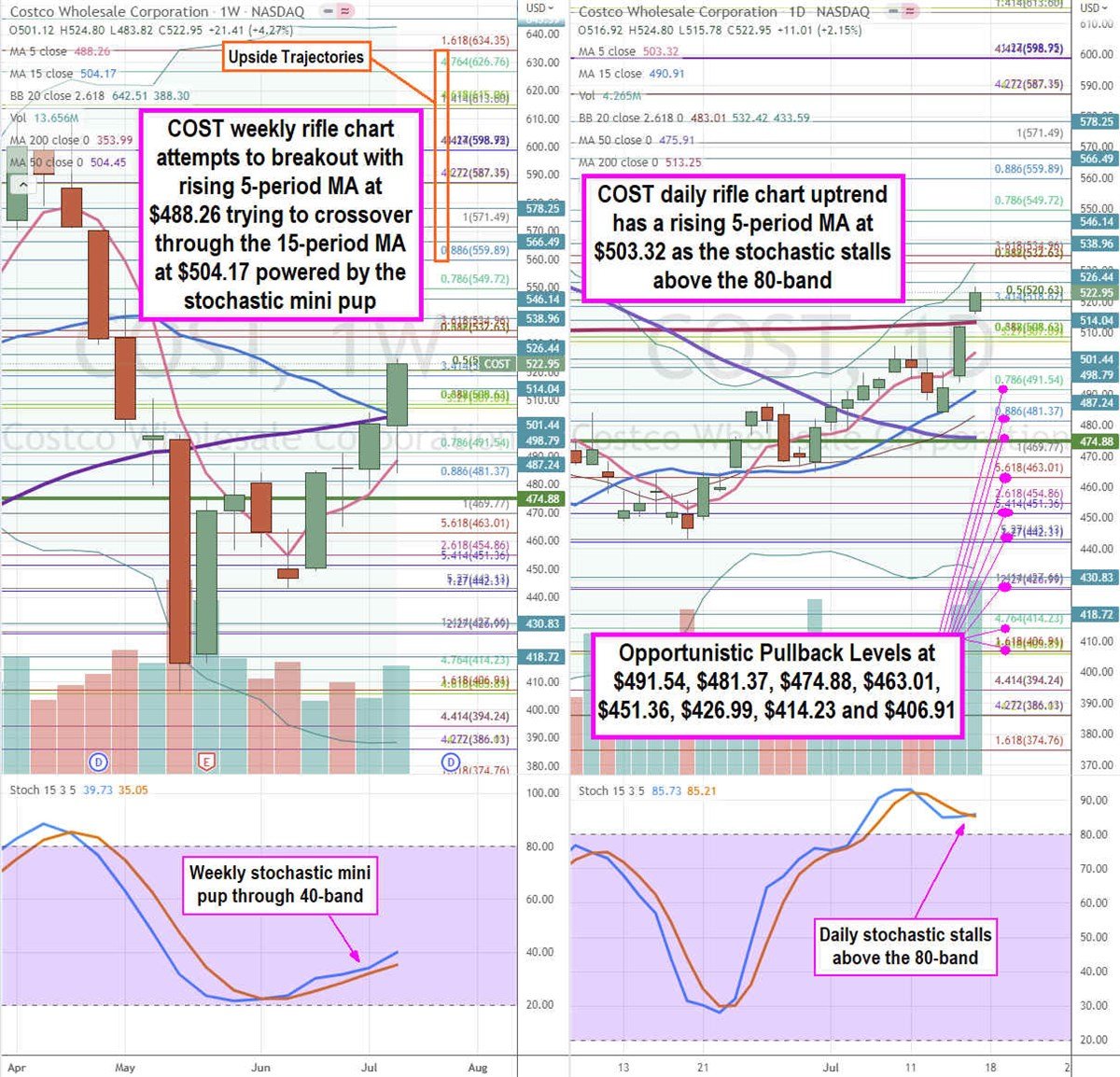
Membership based warehouse retailer Costco (NASDAQ:COST) stock has trimmed its losses to (-7.7%) on the year. The retail giant operates 830 warehouses worldwide including the majority 574 locations in the U.S. It has fared much better than rival consumer retailers Target (NYSE:TGT) and Walmart (NYSE:WMT).
Consumers are opting to buy food and household items in bulk to mitigate runaway inflation as they look for bargains. This is a similar tailwind to the pandemic stockpiling trend. This is evidenced by the 6.8% rise in traffic and 7.6% rise in average transaction worldwide in its fiscal Q3 2022 earnings.
Membership grew 6% to 64.4 million households and 116.6 million cardholders in the quarter. Executive memberships rose 800,000 in the quarter representing over 71% of worldwide sales and 43% of its whole membership base. Membership renewal rates hit all-time highs of 92.3% in the U.S. and Canada. Inflationary pressures on consumers has convinced management to hold off on increasing its membership fees.
Warehouse memberships are growing in popularity during the inflationary times and Costco is a key benefactor of this trend as it continues to expand with 17 new warehouses to date and expects to open an additional 10 warehouses for a total of 27 locations this year. Supply chain issues kept it from opening two warehouses but are set to open by late second half of the year.
Costco Logistics transitions from vendor drop ship to direct ship from its own inventory averaging over 58,000 stops a week. This helps lower costs and improve delivery times. Prudent investors looking to gain exposure with the best membership warehouse retailer can patiently watch for opportunistic pullbacks in shares of Costco.
Fiscal Q3 2022 Earnings Release
On May 26, 2022, Costco released its fiscal third-quarter 2022 results for the quarter ending May 2022. The Company reported an earnings-per-share (EPS) profit of $3.04 excluding non-recurring items versus consensus analyst estimates for a profit of $3.02, a $0.02 beat. Revenues rose 18.5% year-over-year (YoY) to $52.6 billion, beating consensus analyst estimates for $51.49 billion. The Company reported total comparable store sales up 10.7% and adjusted e-commerce comparable sales up 7.9%.
Conference Call Takeaways
Costco Senior Vice President of Finance and Investor Relations Bob Nelson lead the conference call as its CEO was out of the country on vacation. There was a $77 million pre-tax charge in conjunction with its new employee agreement to adjust benefit accrual accounting for one additional vacation day. The FX headwinds in the U.S. was 10.7% and 12.8% in Canada excluding gas inflation.
Shopper frequency rose 6.8% worldwide and up 5.6$ in the U.S. with average transaction rising 7.6% worldwide and 10.4% in the U.S. He noted that the best performing categories were candy, bakery, deli, sundries, toys, jewelry, kiosks, home furnishing, apparel, and tires. The worst performing categories were liquor, office, hardware, and sporting goods.
Membership fee income rose to $984 million or 1.91% of sales. Renewal rates hit all-time highs of 92.3%. While inventory levels rose 26% versus 19% in last quarter, most of it was inflation-related not unit related. Additionally, the Company beefed up stock in categories that had lower inventory last year including TVs, sporting goods, lawn and garden and seasonal products.
Gross margins did fall by 99 basis points excluding the negative impact from gas inflation. He concluded that the Company has and continues to sell it's hot dog and soda combination for $1.50 since its introduction in the mid-80s and rumors of a price increase are false.

COST Opportunistic Pullback Price Levels
Using the rifle charts on the weekly and daily time frames provides a precision view of the landscape for COST stock. The weekly rifle chart downtrend put in a bottom at the $406.93 Fibonacci (fib) level. The weekly 5-period moving average (MA) is rising at $488.26 attempting to crossover through the weekly 15-period MA at $504.17 which also overlaps the weekly 50-period MA at $504.45. The weekly upper Bollinger Bands (BBs) sit at $641.51. The weekly lower BBs sit at $388.30. The weekly stochastic has a bullish mini pup attempting to rise through the 40-band.
The weekly market structure low (MSL) buy triggered on the breakout above $474.88. The daily rifle chart has a pup breakout with a rising 5-period MA support rising at $503.32 with a rising 15-period MA at $490.91. The daily 200-period MA sits at $513.25. The daily upper BBs sit at $532.42 and lower BBs at $433.59. The daily stochastic is above the 80-band and stalling for a cross up or fall under the 80-band. Prudent and patient invests can watch for opportunistic pullback levels at the $491.54 fib, $481.37 fib, $474.88 weekly MSL trigger, $463.01 fib, $451.36 fib, $426.99 fib, $414.23 fib, and $406.91 fib. The upside trajectories range from the $559.89 fib level up towards the $634.35 fib level.
Featured image sourced from Shutterstock







